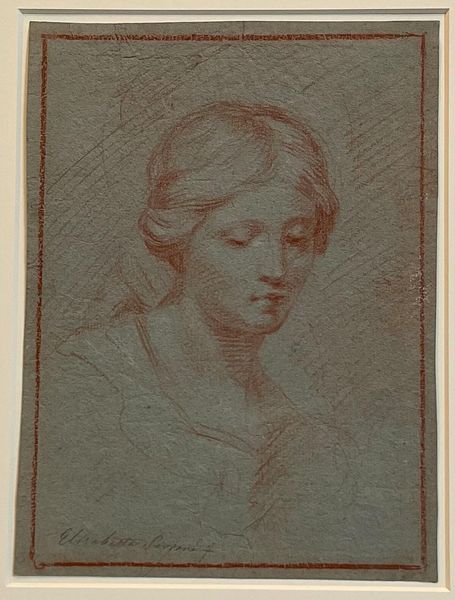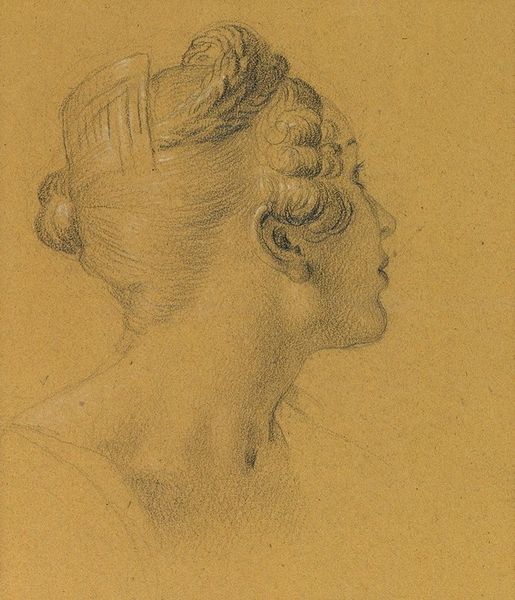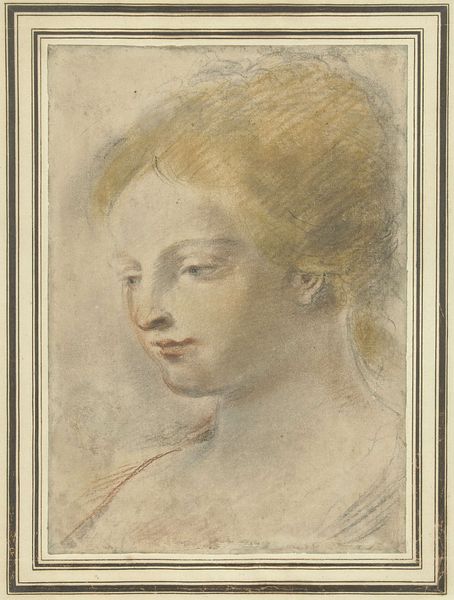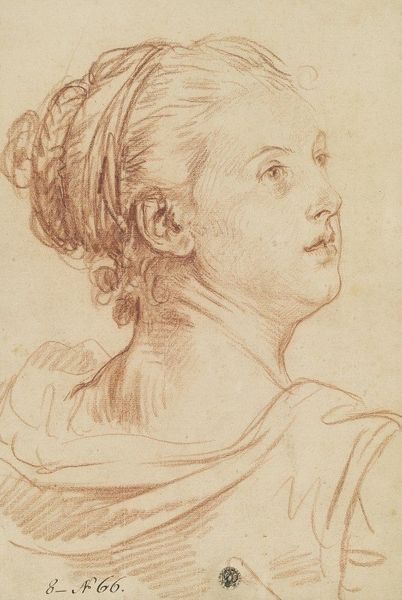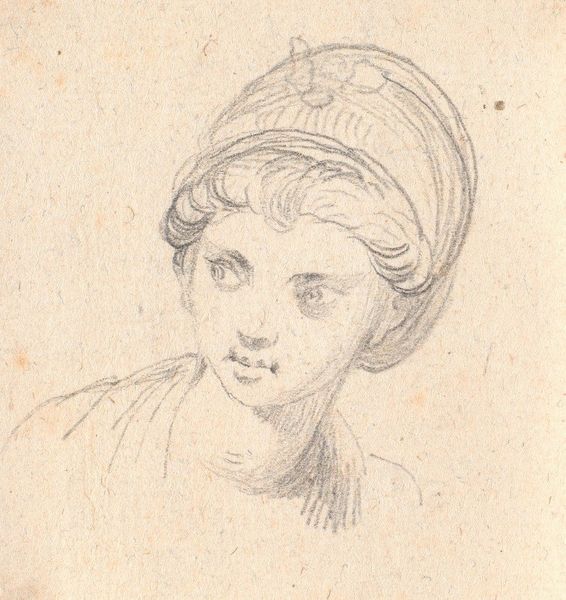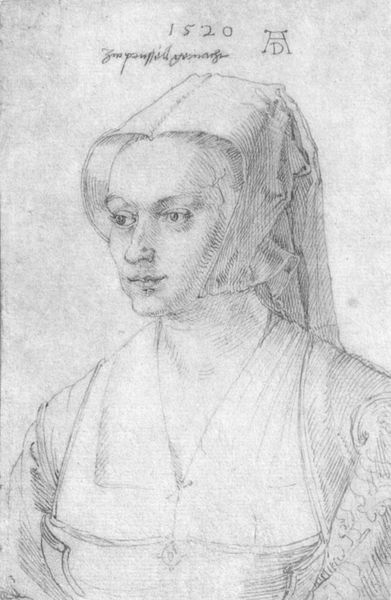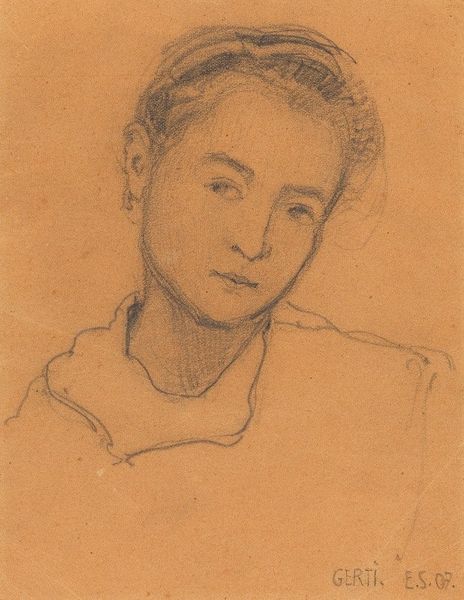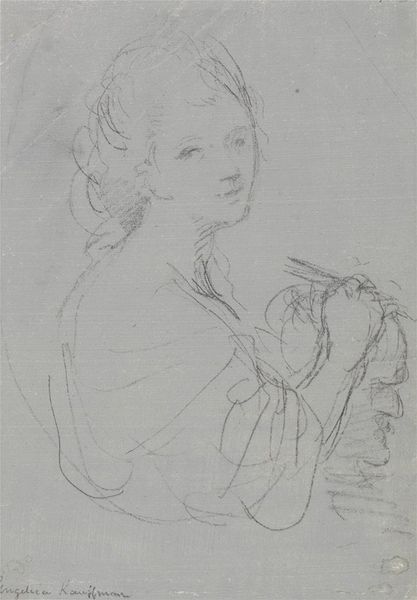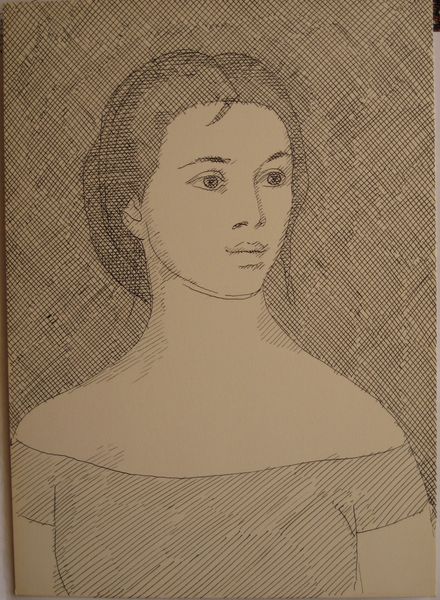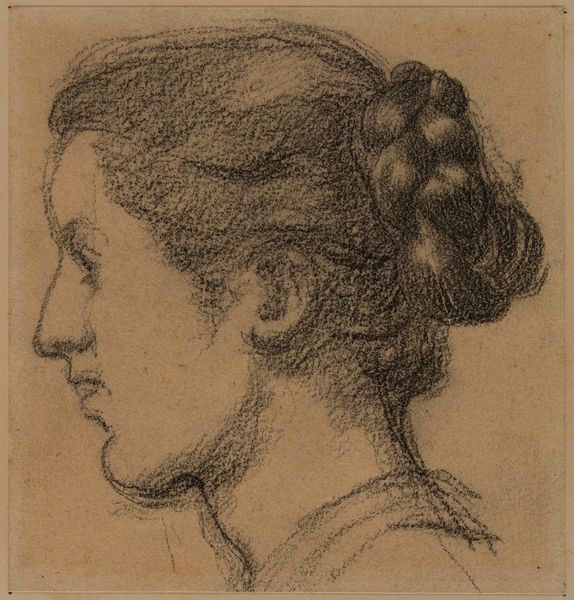
drawing, pencil
#
portrait
#
drawing
#
16_19th-century
#
pencil drawing
#
pencil
#
portrait drawing
#
facial study
#
academic-art
#
realism
Copyright: Public Domain: Artvee
Curator: Looking at "Etude de tête de femme," or "Study of a Woman's Head," from 1868, rendered with a humble pencil by Pierre Puvis de Chavannes... it almost feels like peering into someone's daydream. What are your initial thoughts? Editor: There's an immediate contrast that strikes me – the delicacy of the graphite against the texture of that paper. It’s rough, fibrous, almost like coarse linen. You can almost feel the hand pressing the pencil into it, those minute variations of pressure that build form. It brings up thoughts of the mills and materials available to him, the price of art materials during the period and the audience he was catering to, perhaps the rising middle class? Curator: That texture, it gives the whole image an earthy, almost tangible quality, doesn’t it? Knowing Puvis de Chavannes, though, I wonder if he saw it simply as a stepping stone to grander painted visions. A necessary chore on the road to creating something majestic. To me, the woman's gaze seems faraway, carrying with it that romantic, almost melancholic air. She looks almost like a Renaissance portrait transported to 19th-century France. Editor: Absolutely, she’s looking beyond. But think about it, though: academic drawing in this period was so much about establishing a sort of visual, even ethical, currency with one’s patron. Did using cheap paper offer the artist a level of experimental leeway without committing precious pigments, expensive linen, or canvas? What's discarded in the end often contains the most honest marks of the process. Curator: A clever hypothesis! Looking at it now, you’re right. It is kind of comforting to imagine that this was purely processional. She feels less idealized. More natural, even. More like a girl he had a chat with, I should like to think... What could that one hanging earring mean? A moment's absentmindedness during its making, do you believe, or simply a cost-saving shortcut, saving pigment or lead? A comment about what "real portraiture" had come to, perhaps, or all those things blended? Editor: Right? I’m stuck with thinking about what pencils even looked like back then! Wood type, graphite content, manufacturing variations; these considerations shape everything on the final surface. It might feel raw to us now because we associate the medium itself with amateur art or, you know, rough sketches. We disregard all the economic and social factors that helped to birth it into a reality that still bears fruit for today's society. Curator: Ultimately, perhaps, it's this combination of his academic training and this workaday pencil against slightly coarse paper that allows her delicate humanity to shine. I may well wonder more and longer on those considerations. Editor: Indeed. Every choice embedded, isn't it? From lead mines to salon walls. Art history has a way of obscuring the nitty-gritty of production.
Comments
No comments
Be the first to comment and join the conversation on the ultimate creative platform.
